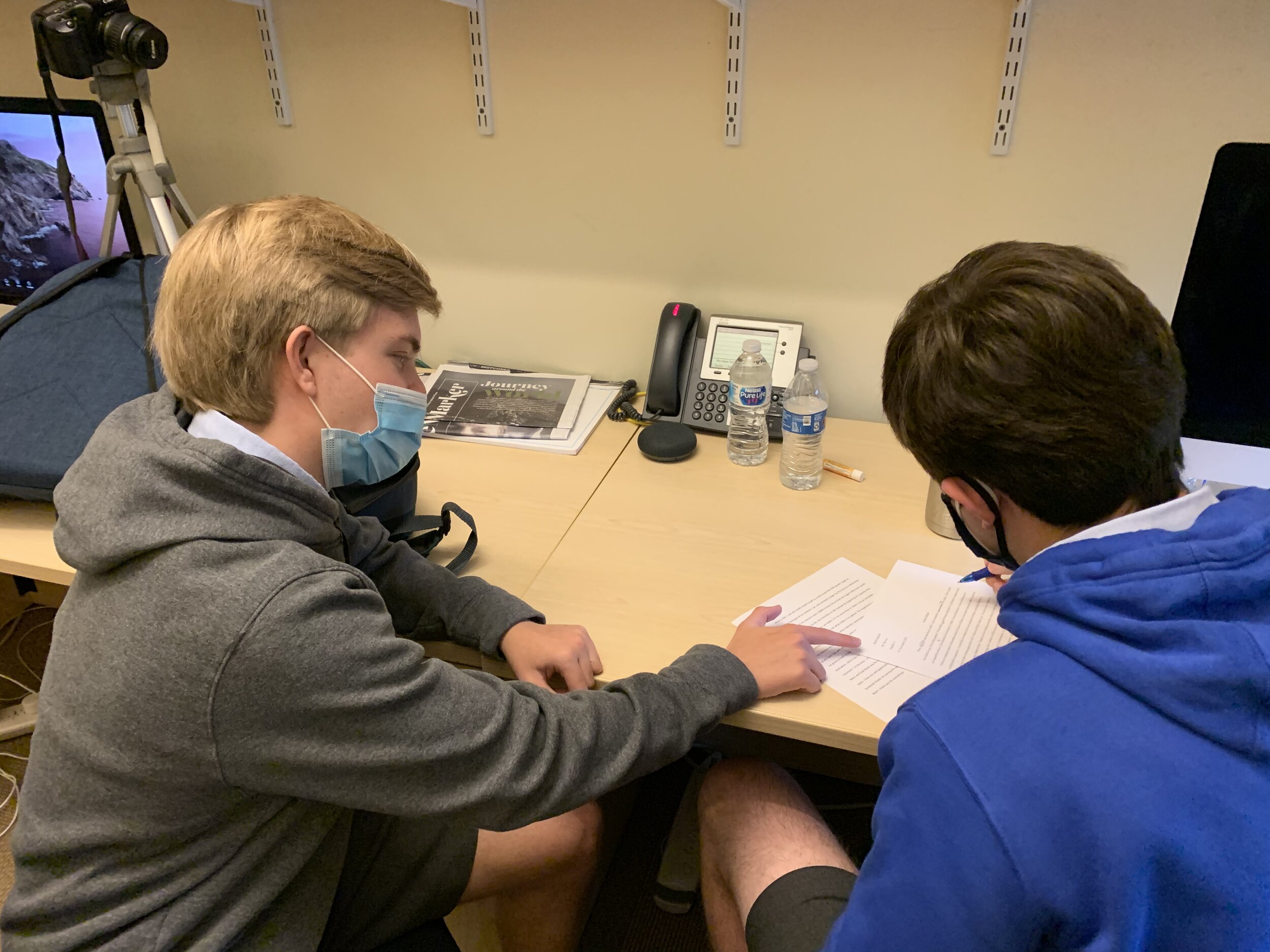
Editing
Editing
Sometimes in the bustle to get everything done in a newspaper cycle, I sometimes forget to look for ways to improve myself and my staff. The vast amount of to-do’s can force me as a journalist to focus simply on getting through everything rather than elevating everyone around me. Every cycle though, I can count on the editing process as a time where I can really coach my team and help them improve as writers. I really enjoy the time I get to sit down with someone and go over their story with them, suggesting changes and revisions. Unfortunately, in the era of COVID-19, this informal style of story direction isn’t as easily achievable, but I’ve still found the editing process to be a time where journalists can improve their craft and sharpen the overall quality of our publication.
Style rules
On The ReMarker, we adhere to AP style rules but with select exceptions and clarifications which make up our very own St. Mark’s style rules. These guidelines help keep our writing consistent and clear – and most importantly more easily readable. Our goal within the editing process is not only to improve our own writing (by striking out unnecessary words or questioning diction) but also to serve our readership (by inserting missing commas or capitalizing proper nouns). Here’s a look at the specific guidelines The ReMarker and Focus Magazine follow.
Observe the story “From club to class” as it passes through copy editing and then page editing on its way to publication in the February 5 edition of The ReMarker.
From Start to Finish
Copy Editing
The day stories are due, writers bring two hard copies of their work to the Publications Suite, and we all sit down to copy edit. In just half an hour, we are able to edit each story, from briefs to Ubers, twice. These now-edited hard copies are returned to the writers who can then make the specified changes. I make sure that editors always include their initials with their edits, so that writers can reach out for additional help or clarification on a specific edit.
A lot of times, it can be easy to become so focused on the style rules and small details that big things, like the overall flow or coherency of the story, can go uncorrected, which is why I’ve stressed to my staff this year the importance of the rewrite. It’s hard to tell someone their work needs a major overhaul when the easy alternative is making a few marks on their paper and giving it back no problem, but having the courage really edit can take a story to the next level. In most cases, this sort of editing requires verbal communication rather than just visual, a feat much more difficult in the era of COVID-19.
Page Editing
After all page designs have been completed, we gather together on a Saturday morning for a “Work Saturday” as we call it. I print off pages, and then we edit them, still reading the stories, but also looking for any errors in the color, images, or formatting. After two rounds of these page edits, a round of computer edits (where the page edits are implemented in Indesign), another round of page edits, and then a second round of computer edits, a page is ready to go. Since most of our newspapers are either 28 or 32 pages, we go through 140-160 edits total on a “Work Saturday.” Our last cycle, we ran 40 pages and ended up making 200 edits.





